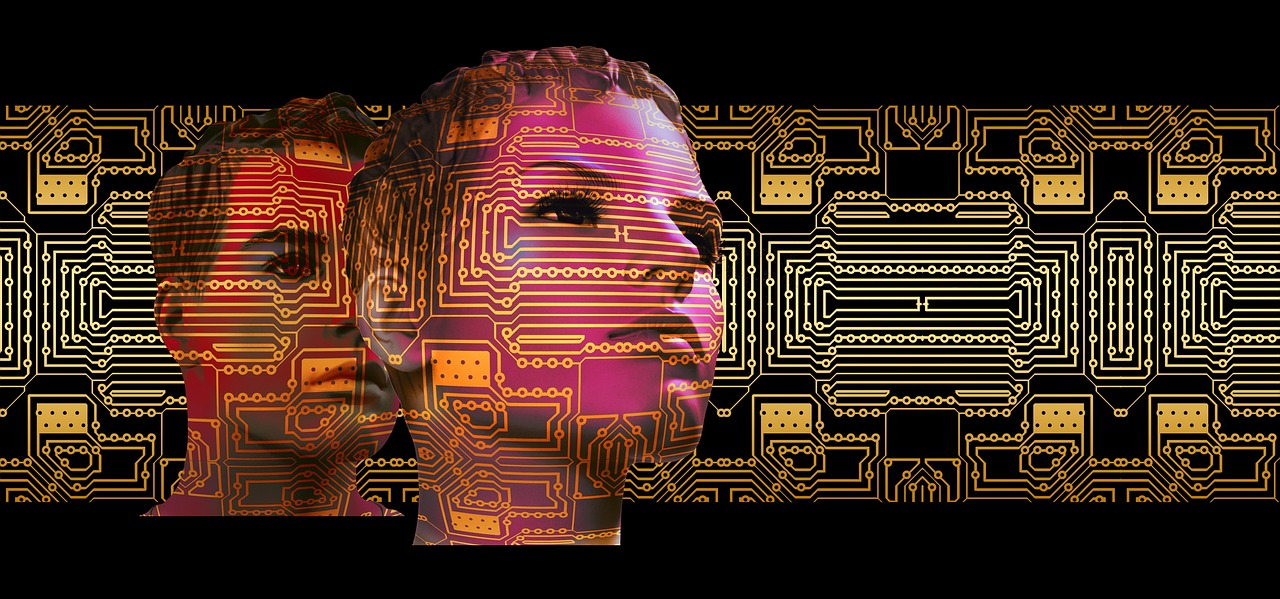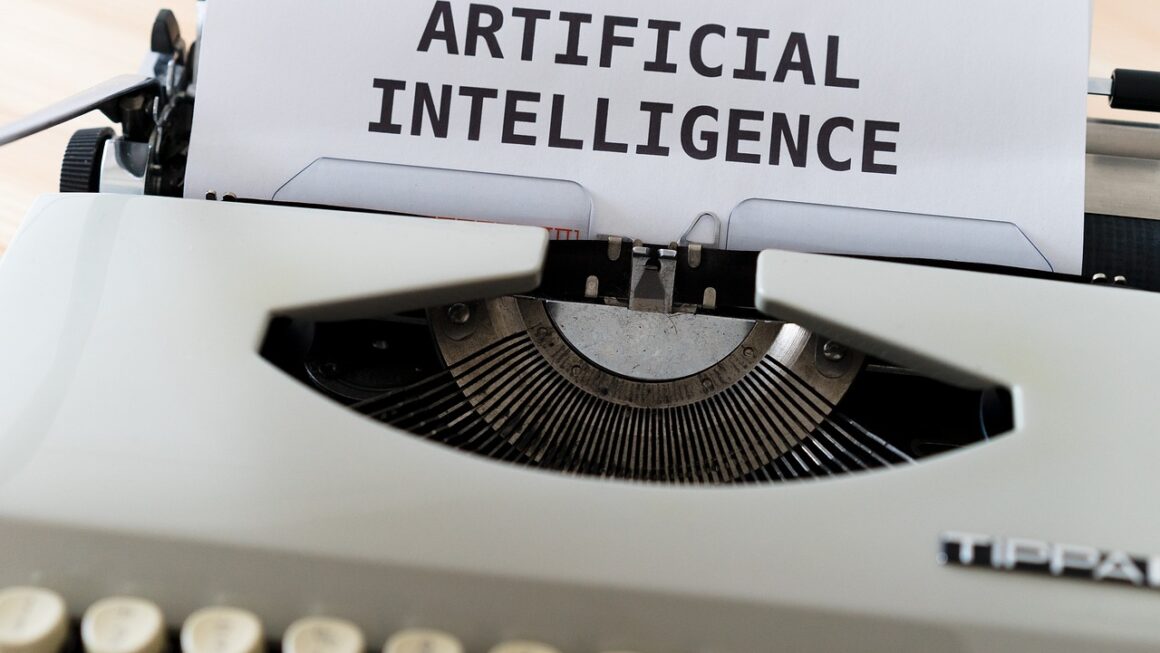Deep learning, a cutting-edge field within artificial intelligence, is rapidly transforming industries from healthcare to finance and beyond. Its ability to automatically learn complex patterns from vast amounts of data makes it a powerful tool for solving problems that were previously intractable. This comprehensive guide will delve into the intricacies of deep learning, exploring its core concepts, applications, and the practical considerations for implementation. Whether you’re a seasoned AI professional or just starting your journey into the world of machine learning, this post aims to provide a clear and insightful understanding of deep learning.
What is Deep Learning?
Defining Deep Learning
Deep learning is a subset of machine learning that utilizes artificial neural networks with multiple layers (hence “deep”) to analyze data and extract complex, hierarchical features. Unlike traditional machine learning algorithms that often require manual feature engineering, deep learning models can automatically learn relevant features from raw data. This automated feature extraction is one of the key reasons for deep learning’s success in areas like image recognition, natural language processing, and speech recognition.
The Difference Between Machine Learning and Deep Learning
While often used interchangeably, machine learning and deep learning are distinct. Machine learning encompasses a broader range of algorithms that enable computers to learn from data without explicit programming. Deep learning, on the other hand, is a specific type of machine learning that relies on deep neural networks. Think of it this way: all deep learning is machine learning, but not all machine learning is deep learning. The key difference lies in the depth (number of layers) of the neural networks used and the ability to automatically learn features.
Key Components of Deep Learning Models
- Artificial Neural Networks (ANNs): The foundation of deep learning. ANNs are inspired by the structure and function of biological neural networks in the human brain.
- Layers: Deep neural networks consist of multiple layers of interconnected nodes (neurons). These layers include an input layer, one or more hidden layers, and an output layer. The more hidden layers, the “deeper” the network.
- Activation Functions: These functions introduce non-linearity into the network, allowing it to learn complex relationships in the data. Common examples include ReLU (Rectified Linear Unit), sigmoid, and tanh.
- Backpropagation: The algorithm used to train deep learning models. It works by calculating the gradient of the loss function (a measure of how well the model is performing) with respect to the model’s parameters (weights and biases) and then updating the parameters to minimize the loss.
- Loss Function: Quantifies the difference between the model’s predictions and the actual values. The goal of training is to minimize this loss. Examples include mean squared error (MSE) for regression and cross-entropy loss for classification.
Architectures of Deep Learning
Convolutional Neural Networks (CNNs)
CNNs are specifically designed for processing data with a grid-like structure, such as images and videos. They leverage convolutional layers, which apply filters to extract features from local regions of the input. Pooling layers reduce the spatial dimensions of the feature maps, making the network more robust to variations in the input.
- Application: Image recognition (e.g., identifying objects in a photo), object detection (e.g., detecting cars in a video), and image segmentation (e.g., dividing an image into different regions).
- Example: ImageNet, a large dataset of labeled images, has been instrumental in the development of CNNs for image recognition. Models like ResNet and Inception are examples of powerful CNN architectures trained on ImageNet.
Recurrent Neural Networks (RNNs)
RNNs are designed to handle sequential data, such as text and time series. They have a recurrent connection that allows them to maintain a “memory” of past inputs, enabling them to capture temporal dependencies.
- Application: Natural language processing (e.g., machine translation, text generation), speech recognition, and time series forecasting.
- Example: Machine translation systems use RNNs to translate text from one language to another. The model takes a sentence in the source language as input and generates a sentence in the target language as output. Long Short-Term Memory (LSTM) and Gated Recurrent Unit (GRU) are popular variations of RNNs that address the vanishing gradient problem.
Transformers
Transformers are a relatively recent architecture that has achieved state-of-the-art results in various NLP tasks. They rely on self-attention mechanisms to weigh the importance of different parts of the input sequence when making predictions. Unlike RNNs, transformers can process the entire input sequence in parallel, leading to faster training times.
- Application: Natural language processing (e.g., machine translation, text summarization), and increasingly in computer vision.
- Example: The BERT (Bidirectional Encoder Representations from Transformers) model, developed by Google, has achieved remarkable results on a wide range of NLP tasks. GPT (Generative Pre-trained Transformer) models are used for text generation and can produce remarkably human-like text.
Autoencoders
Autoencoders are a type of neural network that is trained to reconstruct its input. They consist of an encoder, which maps the input to a lower-dimensional representation (the “latent space”), and a decoder, which maps the latent space representation back to the original input space.
- Application: Dimensionality reduction, anomaly detection, and image denoising.
- Example: Autoencoders can be used to reduce the dimensionality of image data, making it easier to visualize and process. They can also be used to detect anomalies by identifying inputs that are poorly reconstructed.
Practical Applications of Deep Learning
Healthcare
Deep learning is revolutionizing healthcare in various ways.
- Medical Image Analysis: Deep learning models can analyze medical images (e.g., X-rays, CT scans, MRIs) to detect diseases, such as cancer, with high accuracy.
- Drug Discovery: Deep learning can be used to identify potential drug candidates and predict their effectiveness.
- Personalized Medicine: Deep learning can analyze patient data to develop personalized treatment plans.
Example: Google’s DeepMind has developed AI systems that can diagnose eye diseases with accuracy comparable to that of human experts.
Finance
Deep learning is transforming the financial industry.
- Fraud Detection: Deep learning models can identify fraudulent transactions with high accuracy.
- Algorithmic Trading: Deep learning can be used to develop trading strategies that generate profits.
- Risk Management: Deep learning can assess and manage financial risks.
Example: Banks are using deep learning to detect money laundering and other illegal activities.
Retail
Deep learning is improving the retail experience.
- Recommendation Systems: Deep learning can recommend products to customers based on their past purchases and browsing history.
- Personalized Marketing: Deep learning can create personalized marketing campaigns that target specific customers.
- Inventory Management: Deep learning can optimize inventory levels to reduce costs and improve customer satisfaction.
Example: Amazon uses deep learning to recommend products to its customers and personalize their shopping experience.
Autonomous Vehicles
Deep learning is a critical component of autonomous vehicles.
- Object Detection: Deep learning models can detect objects (e.g., pedestrians, cars, traffic lights) in the vehicle’s environment.
- Path Planning: Deep learning can plan the vehicle’s path to its destination.
- Decision Making: Deep learning can make decisions about how to navigate the vehicle.
Example: Tesla uses deep learning extensively in its autopilot system.
Training Deep Learning Models
Data Preparation
- Data Collection: Gathering relevant and representative data is crucial. The quality and quantity of data directly impact model performance.
- Data Cleaning: Removing noise, handling missing values, and correcting inconsistencies are essential steps.
- Data Augmentation: Expanding the dataset by applying transformations (e.g., rotations, flips, crops) to existing data.
- Data Splitting: Dividing the dataset into training, validation, and testing sets. The training set is used to train the model, the validation set is used to tune hyperparameters, and the testing set is used to evaluate the final model’s performance.
Model Selection and Configuration
- Choosing the Right Architecture: Selecting an appropriate deep learning architecture (e.g., CNN, RNN, Transformer) depends on the specific task and data characteristics.
- Hyperparameter Tuning: Optimizing hyperparameters, such as learning rate, batch size, and number of layers, to achieve optimal performance. Techniques like grid search, random search, and Bayesian optimization can be used.
- Regularization: Techniques like L1/L2 regularization and dropout can prevent overfitting and improve generalization.
Training Process
- Epochs and Batches: An epoch is one complete pass through the entire training dataset. The dataset is typically divided into batches for efficient training.
- Optimization Algorithms: Choosing an appropriate optimization algorithm (e.g., stochastic gradient descent (SGD), Adam, RMSprop) to update the model’s parameters.
- Monitoring Performance: Tracking key metrics, such as loss and accuracy, during training to identify potential problems and adjust hyperparameters.
- Early Stopping: Halting the training process when the validation loss stops improving to prevent overfitting.
Tools and Frameworks
- TensorFlow: A widely used open-source deep learning framework developed by Google.
- PyTorch: Another popular open-source framework known for its flexibility and ease of use.
- Keras: A high-level API that simplifies the development of deep learning models. It can run on top of TensorFlow, Theano, or CNTK.
- Cloud Platforms: Cloud platforms like AWS, Google Cloud, and Azure provide access to powerful computing resources and pre-trained models.
Challenges and Future Trends
Challenges
- Data Requirements: Deep learning models typically require large amounts of labeled data to achieve good performance.
- Computational Cost: Training deep learning models can be computationally expensive, requiring powerful hardware (e.g., GPUs).
- Interpretability: Deep learning models can be difficult to interpret, making it challenging to understand why they make certain predictions.
- Overfitting: Deep learning models are prone to overfitting, which means they perform well on the training data but poorly on unseen data.
- Bias: Deep learning models can inherit biases from the data they are trained on, leading to unfair or discriminatory outcomes.
Future Trends
- Explainable AI (XAI): Developing methods to make deep learning models more transparent and interpretable.
- Federated Learning: Training models on decentralized data sources without sharing the data.
- Self-Supervised Learning: Training models on unlabeled data by creating artificial labels.
- TinyML: Deploying deep learning models on resource-constrained devices, such as smartphones and IoT devices.
- Generative AI: Creating models that can generate new data, such as images, text, and music.
Conclusion
Deep learning is a powerful and rapidly evolving field with the potential to solve a wide range of problems. By understanding the core concepts, architectures, and practical considerations discussed in this guide, you can begin to leverage the power of deep learning to create innovative solutions in your own field. While challenges remain, the ongoing research and development in areas like explainable AI and federated learning promise to address these limitations and further expand the applications of deep learning in the years to come. As the technology continues to mature, staying informed about the latest advancements will be key to harnessing its full potential.




